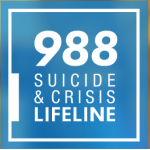According to a new large study led by researchers at the American Cancer Society (ACS), the risk of suicide for individuals diagnosed with cancer in the United States is 26% higher compared with the general population. Geographic, racial/ethnic, socioeconomic, and clinical characteristics contributed to the elevated risk. The study also shows a decline in elevated risk for individuals with cancer compared with the general population from 67% in 2000 to 16% in 2016. The research was published January 20 in the Journal of the American Medical Association (JAMA) Network Open.
“Our findings highlight the importance of timely symptom management and targeted interventions for suicide prevention in individuals with cancer,” said Dr. Xuesong Han, scientific director, health services research at the American Cancer Society and senior author of the study. “These require joint efforts by federal and state governments, as well as healthcare providers, to ensure comprehensive health insurance coverage for psycho-oncological, psychosocial, and palliative care, development of appropriate clinical guidelines for suicide risk screening, and inclusion of suicide prevention in survivorship care plans.”
For the study, researchers analyzed data of 16.8 million individuals diagnosed with cancer in 43 states in the U.S. from 2000-2016. They used the Cancer Incidence in North America (CiNA) Survival dataset compiled by the North American Association of Central Cancer Registries (NAACCR), which contained data from the Centers for Disease Control and Prevention (CDC) National Program of Cancer Registries (NPCR) and the National Cancer Institute (NCI) SEER Registries. Standardized Mortality Ratios (SMR) were calculated based on attained age at death, sex, and race/ethnicity to compare suicide risks in individuals with cancer versus the general population. Cox proportional hazard models were fitted to identify cancer-specific risk factors of suicide among individuals diagnosed with cancer.
The results showed 20,792 individuals with cancer died from suicide during 2000-2016. Compared to the general population, elevated suicide risk was observed across all sociodemographic groups, with particularly higher risks among Hispanics, Medicaid-insured, Medicare-insured aged under 64 years old, or uninsured. The highest suicide risk was observed in the first six months following a cancer diagnosis, with the rate more than seven times higher than the general population. Among individuals diagnosed with cancer, relatively higher suicide risks were observed for poor prognosis cancer types with high symptom burdens in the first two years following diagnosis, including cancers of oral cavity & pharynx, esophagus, stomach, brain, pancreas, and lung. After two years, individuals with cancers subject to long-term quality-of-life impairments, such as oral cavity & pharynx, female breast, uterine, bladder, and leukemia, had higher suicide risks.
“The overall decreasing trend in suicide risk suggests a positive role of the coinciding promotion of psychosocial and palliative care and advances in symptom control and pain management,” said Xin Hu, Ph.D. candidate at Emory University and lead author of the study. “But more needs to be done. Examining the associations of clinical factors such as cancer treatments as well as policy factors with suicide risk and evaluating psychosocial interventions are important areas for future research.”
Other ACS study authors include: Jingxuan Zhao, Dr. Ahmedin Jemal, Dr. Jiemin Ma, Dr. Leticia Nogueira, and Dr. Robin Yabroff.
If you or someone you know are in crisis and in need of support - call the National Suicide Prevention Lifeline at 1-800-273-8255 or text 988.
This article was originally published January 20, 2023, by the American Cancer Society. It is republished with permission.







Comments
Comments